|
|
| |
| 1930 Bentley 6½ Litre |
|
|
Original 1930 Numbers
Chassis No. LR2778
Engine No. NH2748
Registration No. (Not available)
|
|
This car - updated
Chassis No. LR2778
Engine No. NH2748S
Registration No. DUU 618
(Updated with information from RM Sotheby's. - August 2019) |
|
| |
|
|
 |
| August 2019 |
| Click
on thumbnail for larger view |
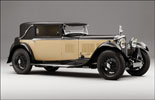 |
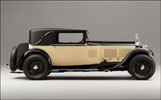 |
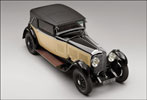 |
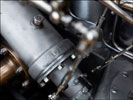 |
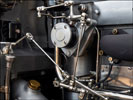 |
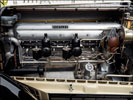 |
|
| |
 |
| |
Found on RM Sotheby's website on August 21, 2019
RM | Sotheby's - MONTEREY 15 - 17 AUGUST 2019 - Offered on Saturday
Still For Sale
1930 Bentley 6½-Litre 'Speed Six' Sportsman’s Saloon by H.J. Mulliner
Chassis No. LR2778
Engine No. NH2748S
Gearbox No. 6826
Body No. 3804
- One of the most extraordinary surviving “W.O.” Bentleys
- Originally delivered to Man Singh II, Maharaja of Jaipur
- Remarkably pure, including original chassis, engine, drivetrain, and bodywork
- Immaculate, painstakingly researched restoration by marque specialists R.C. Moss
- Triple award winner, 2012 Pebble Beach Concours d’Elegance
- Documented by Bentley historian Dr. Clare Hay
NO INTERNET BIDDING
THE FINER THINGS - A MAHARAJA’S SPEED SIX
India in the time of the British Raj was a land of unimaginable wealth and splendor, exemplified by the luxurious sporting lives of its numerous territorial leaders. Typical among them was Sawai Man Singh II, Maharaja of Jaipur, who ascended to that position at the age of 10 in 1922. By 1930, at 18, he was a handsome, strongly built young man of imposing bearing and impressive physical strength, the kind of wealthy, worldly young sportsman for whom W.O. Bentley’s automobiles existed.
The car that the Maharaja would eventually acquire, chassis no. LR2778, was a Bentley 6½-Litre ‘Speed Six.’ Chassis LR2778 had been produced for Bentley Motors stock, with an aptly named sportsman’s saloon body produced by H.J. Mulliner to the latest evolution of the French Weymann patent method, with a flexible inner framework skinned in aluminum and a synthetic leather roof covering set off by a polished aluminum beltline. Its engine was a beast of a six, stamped “S” to denote the ‘Speed Six’ features of a single-port block, 4.9 compression ratio, dual SU carburetors, and an Elektron crankcase and camcase, producing, in 1930 specification, 180 hp. The chassis was fitted with the newly designed Bentley & Draper friction shock absorber to the front axle; hydraulic shock absorbers to the rear axle; 13/50 rear axle; and a C-type gearbox. The radiator was finished in chromium, crowned with a Lalique Coq Nain, and a rectangular Hobson telegauge fitted to the instrument panel.
Bentley Motors sold the car in October 1930 to the Maharaja, via Jack Barclay and Duff Morgan Ltd., and it was exported to Jaipur soon thereafter. It was maintained there by Barker, the famous London coachbuilder with a branch in India well-known for servicing royal automobiles.
In 1937 the car was returned to England, registered DUU 618, and sold through Barker’s showroom to Dennis “Denny” Becker that September. The surviving Bentley Service Record notes the installation of a “new old-stock” front axle bed and kingpins in March 1938, replacing components improperly installed in India. Further work continued in 1939, including the installation of a Bluemel steering wheel (still present today), after which the car was laid up for much of World War II’s fuel rationing. After the war it was returned to the road and used by the Becker family for extended European touring in Holland, Germany, Austria, Switzerland, and France, with 17-year-old Simon Becker running it on the autobahn. He inherited the car from his father in 1951 and continued the sporting tradition, running the car regularly and taking it on his honeymoon in 1954, joining the Bentley Drivers’ Club, and participating in numerous BDC trials and events. It was occasionally “rebuilt” over the years, work limited mainly to cosmetic maintenance and a slight alteration of the top, but was always faithfully maintained and, well into the 1970s, used as an everyday car. One day the Beckers parked the car, as they often did, on a London street, and it was appropriated for a fashion shoot; Simon Becker was later astonished to find his car and a pretty girl in an issue of Vogue in his dentist’s waiting room.
By 1974 the Bentley was no longer practical for everyday driving and was sold that year to Ian Findlater, who re-trimmed and refinished the car to the standards of the time later in the decade. Mr. Findlater was a good mechanical caretaker of the car, enjoying driving it in enthusiast events and displaying it at BDC shows and concours. Most prominently, it represented the British automobile in an exhibit at the opening of the “Chunnel” in 1994.
After 30 years of good care, Mr. Findlater sold the Bentley to a German collector in 2004. In 2010 it was acquired by the present owners, who consigned it to the renowned British specialists R.C. Moss of Melchbourne, Bedford, to be restored to its original condition and appearance. To that end, the car was researched and examined thoroughly by both the fastidious Mr. Moss and by renowned Bentley historian Dr. Clare Hay. Similarly, well-preserved original ‘Speed Sixes’ were studied and photographed and Mulliner’s original build processes duplicated whenever possible.
While the car had remained largely intact and unmolested, numerous small details had to be corrected throughout. The original Bentley & Draper hydraulic rear shock absorbers, long ago replaced and now unobtainable, had to be remanufactured to original specifications, as did the wind-lacing for the doors, the proper type of wiring, and, remarkably, even the original formula of linseed-oil-based paint. The original running boards had gone missing but were sourced, restored, and reinstalled. Not only were the seats finished to the proper material and pattern, but they were stuffed with horsehair, as original. In the midst of this, the car’s numbered components were all examined and photographed, and with the exception of the aforementioned front axle replacement, everything was found to be the original pieces installed in 1930.
Dr. Hay covered the restoration in an expansive 106-page history, lavishly illustrated with photographs of the car taken through every step of its life, as well as a complete record of the restoration work, which, she notes, “is to the highest possible standards, perfect in every respect.” Judges agreed.
In its inaugural showing, at completion of the restoration in 2012, the car was judged 2nd in Class and awarded the Montagu of Beaulieu Trophy and the J.B. Nethercutt Trophy for Most Elegant Closed Car at the prestigious Pebble Beach Concours d’Elegance. It was later shown that same year at the Windsor Castle Concours of Elegance in its home country.
There is, quite simply, no better-restored closed ‘Speed Six,’ and almost none that can be compared in their purity and consistently well maintained, caring history with only a handful of enthusiasts. It is the exquisite, perfectly finished emblem of all that is superb in engineering and design from the Classic Era—appropriate, now as then, for a man accustomed to the finer things in life.
|
|
| |
|
|
| |
|
|
| |
Source:
RM Sotheby's
Posted: Aug 21, 2019 |
|
| |
|
|
|
|
 |
 |
| May 2019 |
| Click
on thumbnail for larger view |
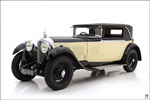 |
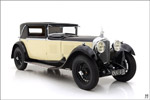 |
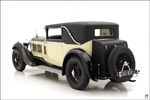 |
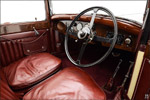 |
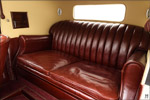 |
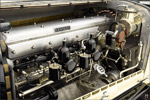 |
|
| |
 |
| |
Found on Hyman Ltd. website on May 24, 2019
1930 Bentley Speed Six Sportsman
Chassis no. LR2778
Price: $4,250,000
Stock Number: 6459
It is with pride that we offer one of the most extraordinary of all surviving Speed Sixes, chassis number LR2778 with Sportsman’s Saloon coachwork by H.J. Mulliner. As a 1930 model, this motorcar incorporates all of Le Mans-inspired improvements, and it wears marvelous, lightweight and sporty closed coachwork. The history of LR2778 is truly remarkable; fully documented by the respected marque historian, Dr. Clare Hay. It retains its original chassis, engine, drivetrain, and bodywork and has never been significantly modified.
According to the Hay Report, LR2778 was finished at Cricklewood with a 13/50 rear axle, C-Type gearbox (case #6826), Bentley & Draper friction front/hydraulic rear dampers and a chrome-plated radiator. The order also specified chrome fittings, 33 x 7.00 tires, and a rectangular Hobson Telegauge. The powerful six-cylinder engine bears number NH2748 with an “S” denoting this as a factory Speed Model. Interestingly, the coachwork was not built to special order by the first owner; rather, records indicate it was built for Bentley stock – with the build records noting “Our Own Body Order.” The four-seat coupe coachwork by H.J. Mulliner was in fashion for the time, with Barker and Gurney Nutting offering their own variations, known interchangeably as a sportsman’s coupe, close-coupled saloon, or fixed head coupe. For their interpretation, H.J. Mulliner employed the ultimate refinement of the patented Weymann technique, utilizing a light, flexible structure skinned in alloy to the beltline, and in grained leathercloth on the roof. Light in weight, it no doubt imparted the powerful Speed Six chassis with breathtaking performance.
Records show the completed car went first to Jack Barclay Ltd. yet was ultimately sold by Duff Morgan Ltd. on October 17, 1930, and exported to India very soon after on behalf of its first owner, the Maharaja of Jaipur, Sawai Man Singh II. Just eighteen years of age when he purchased his magnificent Bentley, Singh no doubt had impeccable taste in motorcars. The young Maharaja was an avid sportsman, with an impressive record in polo, winning the World Cup in 1933. Despite assuming power at just 11 years old, the Maharaja was no mere playboy, and he matured into an astute politician. His efforts to build infrastructure and modernize his home of Jaipur later led to its selection as the capital of Rajasthan, and later, he then served as Ambassador to Spain. The choice of this stunning Bentley reflected his exceptional taste and love of sport. Records indicate the car remained in India through at least 1935, and most likely until two years later. The next entry appeared when it was registered as DUU618 for the new owner, Denis Becker of London. Documents indicate The Maharaja may have consigned the car to Barker’s London showroom, where Becker purchased it in 1937.
In the Becker family’s hands, the Speed Six underwent some servicing including fitment of a new-old-stock front axle in 1938. Inexperienced Indian mechanics may have damaged the original. Also, while in India, the car sported a flamboyant Lalique crystal cockerel mascot, likely transferred to another of the Maharaja’s vehicles before the sale. Replacing it was a dolphin mascot fitted by Mr. Becker, no doubt a nod to his wife, Delphine. In 1942, the Speed Six was still with the Becker family, reportedly with Geo Becker. There is even mention of his fifteen-year-old daughter Jane learning to drive in it, with one lesson ending with her putting the mighty Bentley on top of a roundabout!
Like many large classic cars of the time, LR2778 was put up during the war when petrol rationing meant virtually all private automobiles were rendered useless. In 1946, the LR2778 was relicensed under a new business name – yet still within the Becker clan. Young Simon Becker inherited the car and became its next long-term owner, enjoying it to the fullest while also acting as a fine custodian and ensuring its long-term survival. In 1954, Simon entered LR2778 in a Bentley Driver’s Club meet, handily winning his group and proving the car had lost none of its performance. The first rebuild followed later in 1954 and Simon continued to use the car regularly, using it for Grand Touring around Europe and even employing it as his daily driver for some time. The car was a regular fixture around London even as the value and running costs began to mount.
In 1974, after thirty-seven years in the Becker family and another refresh of the cosmetics, Simon Becker consigned LR2778 to a Christie’s auction, where it sold for £17,500. The new owner, Ian Finlator, handed the car to Tony Townshend in 1978 for a ground-up restoration. As was typical of the period, some minor detail changes were made, and while not to today’s exacting standards, it was nonetheless a comprehensive project. The livery was changed again, the green body sides it wore during the entire tenure of the Becker family changed to dark red; however, it retained the black wings and bonnet that the car has worn since new. Finlator enjoyed the Speed Six for many years to come, including on the 1985 Rallye Monte Carlo historic, and it making occasional appearances at BDC concours events throughout Britain in the 1980s and 1990s. In 1994, LR2778 was chosen as the representative British car for the opening of the Channel Tunnel rail line and displayed proudly alongside a Bugatti Royale at the Place de Defense in Paris.
After thirty years of ownership, Ian Finlator sold LR2778 to a German collector, and by 2010 it returned to the UK via famed dealer P&A Wood. Shortly thereafter, the current owner acquired the car and commenced a no-expense-spared restoration to original H.J. Mulliner specification with the renowned Vintage Bentley specialist Graham Moss of R.C. Moss. Before the start of the painstakingly researched restoration, Clare Hay inspected the car and found it to be a remarkably sound and original car, with the front axle being the only significant component changed (by Bentley in 1938). The engine, gearbox, clutch assembly, and rear axle were all found to be original to this car. As specified in the service records, the car retains its originally-equipped Elektron crankcase, with aluminum covers and fittings, correct to 1930 specification.
For the body restoration, a tremendous amount of research went into recreating the techniques used by H.J. Mulliner at the time. No company records exist from the time, so Graham Moss carefully studied an original, untouched Mulliner body built for the 1929 Olympia motor show, as well as other unrestored cars to learn precisely how the bodies were crafted and trimmed. Every aspect of the interior was restored employing original techniques, with hidden stitching, and horsehair stuffing of the seats to ensure purity and originality. The chassis restoration was somewhat more straightforward, with the proper materials, fittings, and details a largely known-quantity thanks to the survival of factory service documents. While the chassis retained a high degree of original components, it was necessary to carefully reproduce certain items, including the previously unavailable Bentley & Draper dampers. The chassis alone is a work of art, and the restoration record includes dramatic studio photos in its bare state. Now returned to its original livery of black with ivory side panels and a marble-finished oxblood red cabin, the presentation is breathtaking. The final flourish was the addition of an original-style Lalique cockerel mascot – complete with genuine Lalique switch for the illumination, sourced by Clare Hay.
With such care and attention to detail, it is of little surprise that the finished product is so spectacular. LR2778 is one of the most elegant representations of the sporting Vintage Bentley, presented in its original specification and beautiful colors, as delivered to Maharaja Man Singh II. Upon completion of the restoration in 2012, the car debuted on the lawn of the Pebble Beach Concours d’Elegance where it earned a 2nd in class, the coveted J.B. Nethercutt Trophy for the Most Elegant Closed Car and the Lord Montagu of Beaulieu Trophy for the Most Significant Car of British Origin. The same year, it returned to England and appeared at the Windsor Castle Concours. It remains in exquisite order and the concours success has continued, with a Best in Show and Best Bentley at 2019 Cavallino Classic Sports Sunday, and is fresh from scoring Best in Class, Pre War European at the 2019 Amelia Island Concours d’Elegance.
Thanks to the efforts of the long-term custodians who lovingly cared for and preserved the car without modification, LR2778 survives as one of the most elegant and visually arresting Vintage Bentleys extant. The meticulous, painstaking restoration and complete history have been documented by Dr. Clare Hay, presented in a beautiful leather-bound book matching the upholstery. In fabulous running order, and a sure entry into virtually any event worldwide, the Maharaja’s astonishing Speed Six will stand as the crown jewel of any collection.
This car
is for sale as of May 24, 2019 |
|
| |
|
|
| |
|
|
| |
Source:
Hyman Ltd.
Posted: May 24, 2019 |
|
| |
|
|
|
|
 |
 |
| June 2018 |
| Click
on thumbnail for larger view |
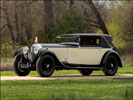 |
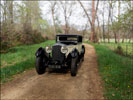 |
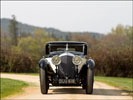 |
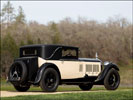 |
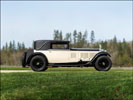 |
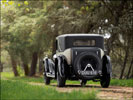 |
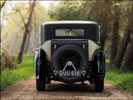 |
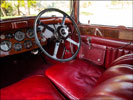 |
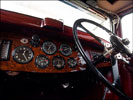 |
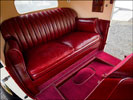 |
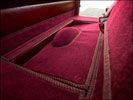 |
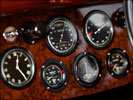 |
 |
 |
 |
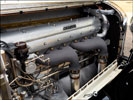 |
|
|
|
| |
 |
| |
Found on RM Sotheby's website on June 27, 2018
1930 Bentley 6½-Litre 'Speed Six' Sportsman’s Saloon by H.J. Mulliner
Chassis No. LR2778 ~
Engine No. NH2748S
Gearbox No. 6826
Body No. 3804
Price Upon Request
- One of the most extraordinary surviving “W.O.” Bentleys
- Originally delivered to Man Singh II, Maharaja of Jaipur
- Remarkably pure, including original chassis, engine, drivetrain, and bodywork
- Immaculate, painstakingly researched restoration by marque specialists R.C. Moss
- Triple award winner, 2012 Pebble Beach Concours d’Elegance
- Documented by Bentley historian Dr. Clare Hay
THE FINER THINGS
India in the time of the British Raj was a land of unimaginable wealth and splendor, exemplified by the luxurious sporting lives of its numerous territorial leaders. Typical among them was Sawai Man Singh II, Maharaja of Jaipur, who ascended to that position at the age of 10 in 1922. By 1930, at 18, he was a handsome, strongly built young man of imposing bearing and impressive physical strength, the kind of wealthy, worldly young sportsman for whom W.O. Bentley’s automobiles existed.
The car that the Maharaja would eventually acquire, chassis no. LR2778, was a Bentley 6½-Litre ‘Speed Six.’ Chassis LR2778 had been produced for Bentley Motors stock, with an aptly named Sportsman’s Saloon body produced by H.J. Mulliner to the latest evolution of the French Weymann patent method, with a flexible inner framework skinned in aluminum and a synthetic leather roof covering, set off by a polished aluminum beltline. Its engine was a beast of a six, stamped “S” to denote the ‘Speed Six’ features of a single-port block, 4.9 compression ratio, dual SU carburetors, and an Elektron crankcase and camcase, producing, in 1930 specification, 180 hp. The chassis was fitted with the newly designed Bentley & Draper friction shock absorber, to the front axle; hydraulic shock absorbers to the rear axle; 13/50 rear axle; and a ‘C-type’ gearbox. The radiator was finished in chromium, crowned with a Lalique Coq Nain, and a rectangular Hobson telegauge fitted to the instrument panel.
Bentley Motors sold the car in October 1930 to the Maharaja, via Jack Barclay and Duff Morgan Ltd., and it was exported to Jaipur soon thereafter. It was maintained there by Barker, the famous London coachbuilder with a branch in India well known for servicing royal automobiles.
In 1937 the car was returned to England, registered DUU 618, and sold through Barker’s showroom to Dennis “Denny” Becker that September. The surviving Bentley Service Record notes the installation of a ‘New Old Stock’ front axle bed and kingpins, in March 1938, replacing components improperly installed in India. Further work continued in 1939, including the installation of a Bluemel steering wheel (still present today), after which the car was laid up for much of World War II’s fuel rationing. After the War it was returned to the road and used by the Becker family for extended European touring in Holland, Germany, Austria, Switzerland, and France, with their 17-year-old Simon Becker running it on the autobahn. He inherited the car from his father in 1951 and continued the sporting tradition, running the car regularly and taking it on his honeymoon in 1954, joining the Bentley Drivers’ Club, and participating in numerous BDC trials and events. It was occasionally “rebuilt” over the years, work limited mainly to cosmetic maintenance and a slight alteration of the top, but was always faithfully maintained, and, well into the 1970s, used as an everyday car. One day the Beckers parked the car, as they often did, on a London street, and it was appropriated for a fashion shoot; Simon Becker was later astonished to find his car and a pretty girl in the issue of Vogue in his dentist’s waiting room.
By 1974, the Bentley was no longer practical for everyday driving and was sold that year to Ian Findlater, who retrimmed and refinished the car to the standards of the time later in the decade. Mr. Findlater was a good mechanical caretaker of the car, enjoying driving it in enthusiast events and displaying it at BDC shows and concours. Most prominently, it represented the British automobile in an exhibit at the opening of the “Chunnel” in 1994.
After 30 years of good care, Mr. Findlater sold the Bentley to a German collector in 2004. In 2010 it was acquired by the present owners, who consigned it to the renowned British specialists R.C. Moss of Melchbourne, Bedford, to be restored to its original condition and appearance. To that end, the car was researched and examined thoroughly by both the fastidious Mr. Moss and by renowned Bentley historian Dr. Clare Hay. Similarly, well-preserved original ‘Speed Sixes’ were studied and photographed, and Mulliner’s original build processes duplicated whenever possible.
While the car had remained largely intact and unmolested, numerous small details had to be corrected throughout. The original Bentley & Draper hydraulic rear shock absorbers, long ago replaced and now unobtainable, had to be remanufactured to original specifications, as did the windlacing for the doors, the proper type of wiring, and, remarkably, even the original formula of linseed oil-based paint. The original running boards had gone missing but were, remarkably, sourced, restored, and reinstalled. Not only were the seats finished to the proper material and pattern, but they were stuffed with horsehair, as original. In the midst of this, the car’s numbered components were all examined and photographed, and with the exception of the aforementioned front axle replacement, everything was found to be the original pieces installed in 1930.
Dr. Hay covered the restoration in an expansive 106-page history, lavishly illustrated with photographs of the car taken through every step of its life, as well as a complete record of the restoration work which, she notes, “is to the highest possible standards, perfect in every respect.” Judges agreed.
In its inaugural showing, at completion of the restoration in 2012, the car was judged 2nd in Class and awarded the Montagu of Beaulieu Trophy and the J.B. Nethercutt Trophy for Most Elegant Closed Car at the prestigious Pebble Beach Concours d’Elegance. It was later shown that same year at the Windsor Castle Concours of Elegance in its home country.
There is, quite simply, no better restored closed ‘Speed Six,’ and almost none that can be compared in their purity and consistently well-maintained, caring history with only a handful of enthusiasts. It is the exquisite, perfectly finished emblem of all that is superb in engineering and design from the Classic Era – appropriate, now as then, for a man accustomed to the finer things in life. |
|
| |
|
|
| |
|
|
| |
Source:
RM Sotheby's
Posted: Jun 30, 2018 |
|
| |
|
|
|
|
 |
|
|
 |
|
|
 |
|
|
 |
 |
| |
The
following information on LR2778, also
known as 'Jaipur Bentley'
was found on Team-BHP.com posted by
several vintage Bentley enthusiasts
between February 2011 and June 2012 |
|
| |
|
|
| |
Posted
by user 'Clare' (Hay), Feb 25, 2011
The Maharajah of Jaipur's Speed Six
coupe, chassis LR2778:
It's in pieces at Graham Moss's in
the UK, for restoration work. It was
restored by Tony Townshend in the
1970s, repainted in red and black,
with new trim in tan leather. Later
on the red paint below the waistline
was redone in black. It's a very handsome
H J Mulliner body but the 1970s restoration
work wasn't up to scratch, so now
we're doing it properly, copying detail
from an original 41/2 Litre Bentley
H J Mulliner saloon and the body from
a Speed Six shown on H J Mulliner's
stand at Olympia in 1929.
| Click
on thumbnail for larger view |
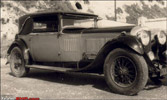
"7 louvres on the scuttle"
|
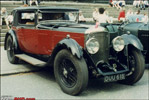
"9 louvres on the scuttle" |
| Observation
made by user 'BentleyBoy' |
Problem is, we don't
know what the original colours were,
and the car has been so heavily restored
over the years that we can't find
any traces.
The black and white photo is the earliest
I can find, from the mid 1950s. Definitely
two-tone, possibly black over ivory.
The second photo was taken by me at
a Bentley Drivers Club Kensington
Gardens concours in the early 1980s,
after restoration by Townshend. Grayscaling
this shows that the red is much darker
than the original light colour.
So does anyone know, did the Maharajah
of Jaipur have "house colours"?
I'm wondering if perhaps he had a
regular colour scheme for his cars.
I've been talking with John Fasal
about his upcoming book on Rolls-Royces
and Bentleys in India book, and I'm
working on the 8 Litre (two in India),
so more photos and info later, if
it's of interest.
Clare Hay
Comments related
to th above photos:
User 'BentleyBoy':
I noticed that the louvres on the
scuttle are 7 on the b&w photo
and 9 on the color photo, any idea
how much of the bodywork needed replacement
in the 70s?
User:
'Travancore': Also noticed
a few other differences from the 1950's
picture...
- Door handle was "T"
shaped, going by its shadow; and placed
lower beneath the waist chrome trim
- Frt accessory drive
cover between dumb irons was shorter
(more "wine bottle" shaped
after restoration)
- Semaphore indicator
on scuttle by A-Pillar ?
- Looks like a unique
hood ornament (not "Winged-B")
- Driving / fog lamp removed
User
'Clare': Yes, the scuttle has
the wrong number of louvres and the
door handles have been changed, but
it looks possible that we've found
the remains of an original saloon
we can use for parts. The engine is
the original. The car was exported
from India in 1937 complete and belonged
to the Becker family from 1937 to
1974 - don't know yet whether I can
trace them. To judge from the black
and white photo I don't think it's
black over ivory, pale green is possible
as H J Mulliner built a Speed Six
coupe around the same time for Carlyle
Blackwell, the film star married to
Woolf Barnato's sister Leah, that
was black and pale green.
Posted
by user 'Clare' (Hay), Mar 14, 2011
"Engine photos of LR2778, the
Maharajah of Jaipur car, as now"
| Click
on thumbnail for larger view |
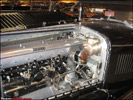 |
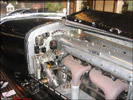 |
Posted
by user 'Clare' (Hay), Mar 17, 2011
"Some good news - I've heard
from Graham Moss, the restorer, that
Mrs Becker has been in touch after
finding the photos of the Maharajah
of Jaipur Speed Six in this thread.
We now know that the car was green
and black and hopefully more photos
will be forthcoming."
Posted
by user 'ArtiBrit' Thomas John Frederick
Becker, April 23, 2011
My name is Thomas John Frederick
Becker. I go by John. I am the eldest
son of Frederick George Lucas Becker
who purchased LR2778 (DUU 618) from
the Maharajah of Jaipur, I believe
in 1937 at the tail end of the Depression,
though it may actually have been purchased
by the family firm, Becker & Co.
Limited founded by my grandfather
Sir Frederick Becker, and of which
my father George was the Managing
Director after the death of Sir Frederick.
I don't have dependable information
of the price that was paid at that
time, though I believe it was somewhat
less than 200 pounds.
I vividly remember the day my father
brought it to our home for the first
time. At that time our family transportation
was a rather rickety Vauxhall, so
I was hugely impressed by the splendor
of the Bentley.
I can say very affirmatively in answer
to the question of its original color
that the roof, trunk, hood and mudguards
were all black, while the sides were
a very pleasing shade of what I would
call "Apple Green". I am
trying to find within our family records
any color photos of the car while
we owned it. If I can't find any,
I can at least submit a color chip
from Sherwin Williams that I believe
comes fairly close to what I remember.
I should note that I am by trade a
professional portrait painter (see
my website: Portrait Painter | Oil
Painting at Portraitpainter.org),
and I have a very good eye for color
matching. But when we first met the
car in 1937 it was black and green.
No blue at all. The seats were covered
in reddish brown leather. The last
time I saw the car and got to drive
it was when it was owned by Ian Findlay,
and I was visiting from the States,
and Ian invited me and Simon down
to see it and "take it for a
spin". Of course by then it had
been painted with red sides and everything
else black.
Posted
by user 'ArtBrit' Thomas John Frederick
Becker, April 25, 2011
I have about a dozen very good pictures
taken when LR2778 DUU 618 was owned
by Ian Findlater, and he invited my
brother Simon, who had sold him the
Bentley about fifteen years or so
earlier, and me to come to Temple
Guiting in the Cotswolds to see his
vintage car collection, and take the
Speed Six out for a spin.
It hadn't been driven for a long time,
and when he backed it out Simon said
"Ian, you haven't I hope forgotten
that when I sold this to you all those
years ago for 17,500 pounds you promised
me then that if you ever put it back
on the market you'd give me a right
of first refusal. Iam well aware that
it has gone up hugely in value in
the meanwhile, and is now worth somewhere
around 200,000 pounds". Ian said
"What are you talking about;
just last week I was offered 300,000
pounds ($600,000). Here are the keys..
off you go". Simon and I had
brought a tape recorder along to record
the Bentley changing gears, a wonderful
sound, and on it you can hear me say
to Simon, "I bet Ian is standing
in his driveway wondering if he'll
ever see us again".
| Click
on thumbnail for larger view |
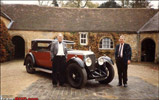
On left if John Becker
with brother Simon Becker |
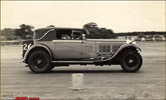
Simon Becker at Silverstone, date
unknown |
Posted
by user 'ArtiBrit' Thomas John Frederick
Becker, April 29, 2011
You might enjoy this anecdote:
Some years ago I was a real estate
broker in Middleburg, Virginia, and
a guy I had never met walked into
my office He spotted the picture I
had on the wall of the Jaipur Speed
Six, and after studying it for some
minutes he said "its amazing
how many vintage Bentleys had Dolphins
on the radiator as a hood ornament".
I immediately sat up, because I knew
very well that the Silver Dolphin
on the hood of the Speed Six had been
put there by my father George Becker
as a tribute to my mother Delphine
de Martelly Seaman Becker, and that
it was one of a kind, and I told him
so.
The chap then said "do you by
any chance have a relative called
Sam Becker?" I replied, "Yes,
he's my brother, Simon". Whereupon
the man replied "Good God! He
and I were in officers training camp
at Mons for the 16th Fifth Lancers
after WWII. He and I had many adventures
in that car". He introduced himself
as Billy Abel Smith, and we became
firm friends.
Posted
by user 'ArtiBrit' Thomas John Frederick
Becker, May 4, 2011
| Click
on thumbnail for larger view |
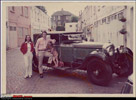
1971: Simon Becker and his young
daughter Tuppy, and
Judy Earnhardt Adams, a mutual
friend of John and Simon. |
This is a forty year
old color photo of the same Bentley
showing the original color when it
came to the Becker family in 1937.
The color quality has deteriorated,
sad to say, but it clearly shows that
Black and Green were the basic colors.
| Click
on thumbnail for larger view |
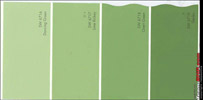 |
This is a color chart
put out by Sherwin Williams in the
USA. As I recall the original green
it fell somewhere between the shade
SW 6718, "Overt Green" and
SW 6719 "Gecko". This is
the closest to what I remember that
I have been able to find.
Posted
by user 'ArtiBrit' Thomas John Frederick
Becker, May 6, 2011
| Click
on thumbnail for larger view |
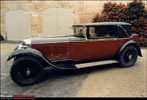 |
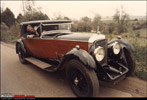 |
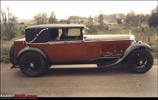 |
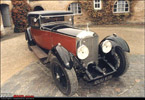 |
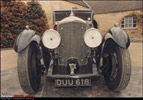 |
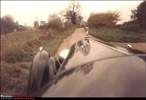 |
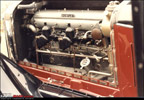 |
|
|
Here are some other
photos of the Jaipur Bentley taken
when it was owned by Ian Findlater,
and including one shot of the left
side of the engine compartment. The
man in the driver's seat is my brother
Simon Becker.
Posted
by user 'ArtiBrit' Thomas John Frederick
Becker, May 7, 2011
An interesting coincidence. In 1952
I was part of a large international
group called Moral Re-Armament that
came to India. We were presenting
stage plays all over the Indian subcontinent.
Actually for several months we lived
on a train. But while we were in New
Delhi we were given the use of Jaipur
House, the former residence of the
Maharajah of Jaipur which is now one
of India's primary art museums, right
next to the Red Fort. At that time,
because of our family's ownership
of the Maharajah's Bentley LR2778
I was keenly interested in seeing
the amazing group of garages clustered
in a Mews behind the House, knowing
that they must at some point have
housed the Bentley. There must have
been about twenty of them if my memory
isn't playing tricks. At that time
they were all vacant, but it was a
very impressive group of garages.
We spent nine months in India and
we all fell hopelessly in love with
it.
Our trip was documented in 2010 in
a remarkable book titled "Ice
in every carriage" by Michael
Henderson, with more than a hundred
photographs. The title referred to
the fact that the only way we could
stay cool on our train in the formidable
summer heat was to have gigantic blocks
of ice placed in the middle of each
compartment once a day, and to turn
the wall fans onto the blocks of ice.
Posted
by user 'Clare' (Hay), May 23, 2011
...great to see your photos
of the Jaipur Speed Six. Meanwhile
the car is in lots of bits and we're
having trouble working out the roof
line and the sunroof.
Response
from user 'DKG', May 23, 2011
What exactly does that mean? Under
restoration or an accident?
Reply
from user 'Clare' (Hay), May 23, 2011
Not quite sure, to be honest, although
I have heard the car was rolled. Stripping
off the roof covering revealed a lot
of old repair work and the roof profile
differs quite a lot from its appearance
in early photos. The sunroof also
seems far too crude to me to be as
fitted by H J Mulliner in 1930, they
were very high-class coachbuilders
and the workmanship in their bodies
is terrific. Aesthetics for coachbuilt
bodies are difficult, as the people
who built them back in the 1920s and
1930s knew exactly what they were
doing, whereas nowadays I've found
quite often that while the workmanship
of some rebuilds is impeccable the
aesthetics are all wrong. You would
be surprised how often people rehang
wings on vintage cars without realising
that the curved portion has to be
concentric with the wheel centre.
Posted
by user 'Clare' (Hay), Nov 5, 2011
Work in progress -- aiming for Pebble
Beach next year.
| Click
on thumbnail for larger view |
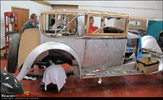 |
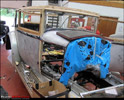 |
Posted
by user 'wumpletoad', Jan 19, 2012
Oh dear!
I have in the past conveyed my disappointment
that "restorations" of worthwhile
vehicles so often are motivated by
the "Pebble Beach syndrome".
Pebble Beach is an over-hyped convention
of the super-rich often possessing
little real understanding of the cars
they contract to others for "bulling"
way beyond the vehicles' manufactured
conditions and characters. In stead
of being used in any sense that approaches
their original purpose, these luckless
artefacts are condemned to the sterility
of being hauled out of a museum or
similarly stultified repose, trailer-ed
to a golf course, paraded like a Parisian
model's poodle and then shut away
again.
What a dreadful potential waste. Surely
one of WO's finest deserves better
than that.
Posted
by user 'travancore', May 8, 2012
| Click
on thumbnail for larger view |
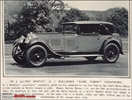 |
I just found this
picture today in an Illustrated London
News issue dated Jul 26, 1930. It
certainly looks awfully like the Jaipur
Bentley.
As I looked at it, I discovered that
original pictures of the car had only
7 louvres on the scuttle side, later
pictures show 9. This picture also
has a slightly different trunk at
the rear.
This picture also implies Weyman construction...
Posted
by user 'travancore', June 3, 2012
| Click
on thumbnail for larger view |
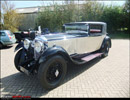 |
Looks like the restoration
is complete........bound for Pebble
Beach 2012?
And back to the original 7 scuttle
louvres again! |
|
| |
|
|
| |
|
|
| |
Source:
Team-BHP, India
Posted: Sep 27, 2012 |
|
| |
|
|
|
|
 |
|
|
 |
 |
|
1975 - 2004 |
 |
| |
Car was in its third
ownership from 1975 to 2004. At this
time the car continues to remain highly
original, retaining all its original
mechanical components as well as its
original and very sporting coachwork,
which includes a large sunroof —
presumably to accommodate for the
Indian weather conditions! It was
the subject of a full restoration
by Tony Townsend in the 1980s, and
following the completion of the work
has been used regularly, its journeys
having included a number of trips
from England to the Côte d’Azur. |
|
| |
|
|
| |
|
|
| |
Source:
ClassicInside – The Classic Driver
Newsletter - May 28, 2004
Posted: Dec 12, 2008 |
|
| |
|
|
|
|
 |
 |
| 2003 |
| In
England in 2003 / Owned by a BDC member |
 |
|
 |
|
|
 |
 |
| 1937
- 1975 |
 |
| |
In 1937 it was purchased
by the Becker family, and was cherished
in their careful ownership for 38
years until 1975 when was sold for
a record price at a Christie’s
auction to its third owner... |
|
| |
|
|
| |
|
|
| |
Source:
ClassicInside – The Classic Driver
Newsletter - May 28, 2004
Posted: Dec 12, 2008 |
|
| |
|
|
|
|
 |
| Click
on thumbnail for larger view |
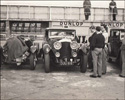 |
|
|
|
| |
 |
| |
|
|
| |
|
|
| |
|
|
| |
Source:
eBay
Posted: Mar 17, 2018 |
|
| |
|
|
|
|
 |
|
 |
 |
| 1930
- 1937 |
 |
| |
This Speed 6 was
originally supplied to the Maharajah
of Jaipur in October 1930. It was
re-imported to England in 1937. |
|
| |
|
|
| |
|
|
| |
Source:
ClassicInside – The Classic Driver
Newsletter - May 28, 2004
Posted: Dec 12, 2008 |
|
| |
|
|
|
|
 |
| Click
on thumbnail for larger view |
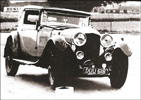 |
|
|
|
| |
 |
| |
Silverstone |
|
| |
|
|
| |
|
|
| |
Source:
Team BHP
Posted: Nov 10, 2010 |
|
| |
|
|
|
|
|
|
 |
| EARLIEST
RECORD OF HISTORICAL FACTS & INFORMATION |
 |
 |
| |
| Chassis No. |
LR2778 |
| Engine No. |
NH2748 |
| Registration
No. |
(India) |
| Date of Delivery: |
Oct 1930 |
| Type of Body: |
Coupe |
| Coachbuilder: |
H J Mulliner |
| Type of Car: |
SP3  |
| |
|
| First Owner: |
Maharaja of Jaipur |
|
|
| |
|
|
| |
More Info:
Michael Hay, in his book Bentley:
The Vintage Years, 1997, states:
"Re-imported 1937 and reg DUU 618.
Original body still fitted." |
|
| |
|
|
| |
|
|
| |
Posted: Mar 01, 2007 |
|
| |
|
|
|
|
| |
| |
| |
| Submit
more information on this car |
| |
| |
| |
|
|
| |
| |
| |
 |
| |
| |
|
| |
|
 |
 |
 |
Sep 30, 2020 - Info and photograph received from Simon Hunt for Chassis No. RL3439 |
 |
 |
Sep 30, 2020 - Info and photographs received from Dick Clay for Chassis No. 147 |
 |
 |
Sep 29, 2020 - Info and photographs received from Ernst Jan Krudop for his Chassis No. AX1651 |
 |
 |
Sep 28, 2020 - Info and photographs received from Lars Hedborg
for his Chassis No. KL3590 |
 |
 |
Sep 25, 2020 - Info and photograph added for Registration No. XV 3207 |
 |
 |
Sep 24, 2020 - Info and photograph added for Registration No. YM 7165 |
 |
| [More] |
 |
|
|
|
 |
|
|
 |
 |
 |
|
CLUB TALK
Upcoming Vintage Bentley Events |
 |
|
|
 |
 |
 |
|
|
 |
| |
|